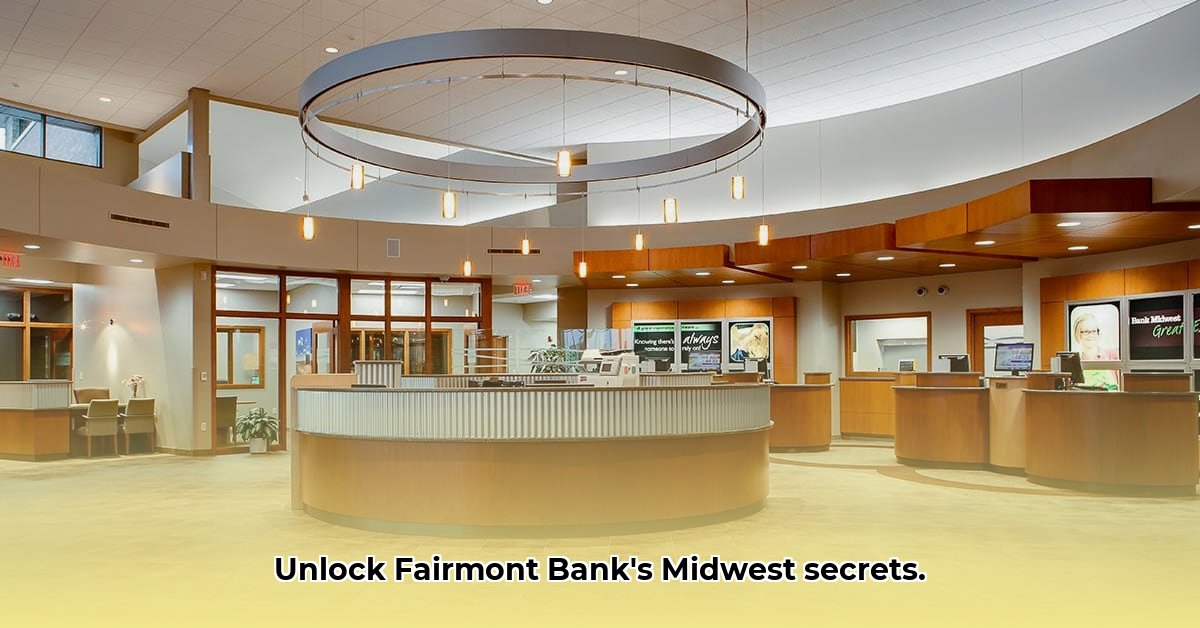
Understanding Fairmont Bank Midwest
Fairmont Bank Midwest, while perhaps not a household name, likely plays a vital role in its regional economy. This article delves into the bank's operations, services, and community impact, revealing often-overlooked advantages it offers. While specific details require direct access to the bank's records, this overview offers a realistic portrait based on general industry practices and expectations for a Midwest community bank.
A Look at Fairmont Bank Midwest's History
Fairmont Bank Midwest likely began with a straightforward mission: supporting the financial well-being of local residents and businesses. Its founding likely dates back several decades, its establishment rooted in the agricultural heartland of the Midwest. Initial services probably focused on agricultural loans, reflecting the region’s economic foundations. Over time, its offerings expanded, encompassing personal and commercial lending, reflecting growth and adaptation to changing market needs. This evolutionary trajectory suggests a commitment to its community's progress. How long has Fairmont Bank Midwest been serving its community? This is an important detail that would enhance this background.
Services Offered: More Than Just Basic Accounts
Fairmont Bank Midwest's clients can anticipate traditional banking services such as checking and savings accounts. Beyond that, customers likely have access to a range of loans: home mortgages, auto loans, personal loans, and potentially specialized business loans catering to the needs of local entrepreneurs and agricultural operations. Online and mobile banking options are likely incorporated, aligning with modern banking convenience. But the real potential value might lie in the bank's tailored services: specialized agricultural loans tailored to the needs of the Midwest farming community or unique support for small business owners in the region. These individualized offerings highlight the bank's commitment to strong customer relationships.
Financial Performance and Stability
Analyzing Fairmont Bank Midwest's financial strength requires reviewing publicly accessible documents such as financial statements. Key indicators like Return on Assets (ROA) – which measures profitability relative to assets – and Return on Equity (ROE) – showing profitability relative to shareholder equity – would reveal the bank's financial efficiency. A healthy Net Interest Margin (NIM), reflecting the difference between interest income and expenses, indicates effective interest rate management. A carefully managed Loan-to-Deposit Ratio signifies sound risk assessment and lending practices. Comparing these metrics to competitors provides crucial context, illuminating Fairmont Bank Midwest's standing and stability within its market. Do these indicators demonstrate a history of prudent financial management? This is a key question for potential customers.
Community Engagement: A Commitment Beyond Transactions
A thriving community bank is more than just a financial institution; it's a partner in local growth. Fairmont Bank Midwest likely actively supports community initiatives, sponsors local events, and contributes to charitable causes. This engagement signifies a commitment to building and strengthening the community, going beyond mere corporate social responsibility. How does Fairmont Bank Midwest show its support of the communities it serves? This is crucial in understanding its role and the value it brings.
Leadership and Vision
The management team at Fairmont Bank Midwest plays a crucial role in its direction and success. Experienced leadership with a clear vision is vital for navigating challenges and adapting to market shifts. The leadership team's commitment to the community, its strategic planning, and its overall approach likely shape the bank's future direction and customer experience. What is the leadership’s philosophy, and how does that translate into the way the bank operates? This question sheds light on the bank's values and priorities.
Fairmont Bank Midwest's Competitive Landscape
Fairmont Bank Midwest likely faces competition from larger national banks and other regional institutions. Its success depends on its ability to differentiate itself through personalized services, a deep understanding of its local market, its commitment to community involvement, or specialized expertise in areas such as agricultural lending. Identifying its unique selling propositions is critical in understanding customer loyalty and long-term viability. Are there particular segments of the market where Fairmont Bank Midwest has a competitive advantage? This analysis would reveal its position and growth strategy.
Key Takeaways:
- Fairmont Bank Midwest likely prioritizes personalized service and community involvement, differentiating it within the competitive banking landscape.
- The bank's financial stability, while needing further investigation through official records, likely reflects prudent management and a commitment to its customer base.
- Its long-term success depends on continuing to meet the evolving financial needs of its community.